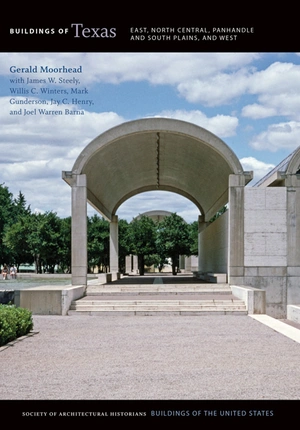
North of downtown El Paso, wrapping the foothills at the base of the Franklin Mountains, a string of neighborhoods chart the city’s growth in the early twentieth century. Four turn-of-the-twentieth-century development additions (Campbell, Alexander, Pierce-Finley, and Franklin Heights) across the large rail yards north of downtown retain their original Craftsman bungalows and Prairie Style houses. A streetcar on Arizona Avenue connected to downtown.
The two-story brick Queen Anne house (c. 1905) built for El Paso symphony conductor Abraham Chavez at 619 Arizona Avenue features Eastlake spindlework, porch friezes, and polygonal bays, with Tuscan porch colonnettes and pedimented gables-as-pediments. Nearby at 1100 N. Ochoa Street, the stuccoclad and flat-roofed Nagley Apartments (1914) have projecting loggia entrances with terraces above and a deep, continuous canopy partially supported on Doric columns.
At 1019 Noble Street the two-story Queen Anne house (c. 1905) has a narrow gabled bay angled to face the street corner and is wrapped by a porch on Tuscan columns. The house is constructed of tan, rock-faced concrete masonry units, giving the appearance of rusticated stone. Across the street at 1201 Arizona, the B. F. Stephens House (c. 1909, Trost and Trost) is a one-story house with a low-pitched roof and a tall frieze that is similar to Trost’s own house (EP34.1). Trost and Trost also designed the Zola and Thomas C. Lea Jr. House (1915; 1400 E. Nevada Avenue). Here the midwestern Prairie Style is transformed into a house expressive of the West Texas desert. The emphatic horizontal lines of the red brick base, the deep overhangs of the low-pitched hipped roof, and the flat-roofed extensions of the front porch, along with the desert tan stucco, relate the house to its site and the Franklin Mountains that rise nearby. Attorney Tom Lea was an El Paso mayor (1915–1917), and his son, artist Tom Lea III (1907–2001) grew up here.

